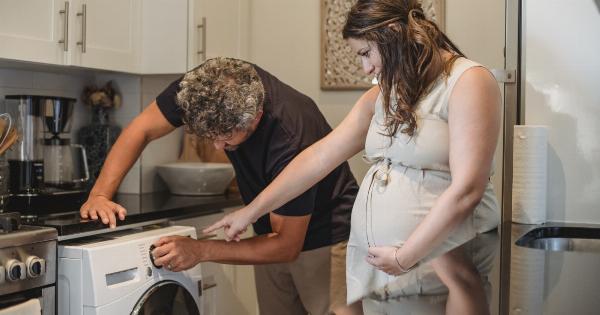When it comes to fertility and reproduction, understanding the lifespan and survivability of sperm is of utmost importance. Knowing how long sperm can survive outside the body can provide valuable insights into conception and contraception.
In this comprehensive guide, we will delve into the factors that influence sperm survival and discuss the various conditions under which sperm can live outside the body.
What is the Lifespan of Sperm?
The lifespan of sperm varies depending on the environment and conditions in which it is present. Generally, sperm has the potential to survive for a short period of time outside the male reproductive system.
Factors Influencing Sperm Survival
Several factors can affect the lifespan of sperm outside the body. Understanding these factors can help individuals make informed decisions regarding fertility and contraception. Let’s explore some of the key determinants:.
1. Temperature
Temperature plays a crucial role in determining sperm survival. Sperm thrives in a warm environment, such as that found inside the human body. However, when exposed to colder temperatures, the lifespan of sperm dramatically decreases.
Cold temperatures can damage the sperm cell membrane and impact its viability.
2. Moisture
Sperm require a certain level of moisture to remain viable. Dry conditions can lead to a rapid decrease in sperm motility and ultimately affect their ability to fertilize an egg.
On the other hand, a moist environment can help preserve sperm for a longer duration outside the body.
3. pH Level
The pH level (acidity or alkalinity) of the environment can also impact the lifespan of sperm. The female reproductive tract provides an ideal alkaline environment, which supports the motility and lifespan of sperm.
In contrast, environments with high acidity, such as certain lubricants or douches, can harm sperm and reduce their viability.
4. Exposure to Air
Exposure to air can have detrimental effects on sperm. Oxygen exposure leads to the production of reactive oxygen species (ROS), which can cause oxidative damage to the sperm cells.
This damage can affect sperm motility and DNA integrity, reducing their survivability outside the body.
5. Presence of Lubricants
Not all lubricants are sperm-friendly. Certain lubricants, such as those containing spermicidal agents or harsh chemicals, can impair sperm function and significantly decrease their lifespan.
It is important to choose lubricants that are specifically designed to be fertility-friendly, or to avoid lubricants altogether when attempting conception or preserving sperm outside the body.
6. Method of Preservation
Preserving sperm outside the body is a common practice in various reproductive procedures, such as artificial insemination and in vitro fertilization (IVF). The method of preservation can significantly impact sperm survival.
Sperm banks and fertility clinics utilize specialized techniques, such as cryopreservation, which involves the freezing of sperm at ultra-low temperatures. This process can extend the lifespan of sperm for several years.
7. Quality and Health of Sperm
The overall quality and health of sperm play a crucial role in their survival. Sperm produced by individuals with optimal fertility levels and sperm count have greater chances of surviving outside the body for longer periods.
Various lifestyle factors, such as diet, exercise, and avoidance of harmful substances, can contribute to the overall health and quality of sperm.
How Long Can Sperm Survive Outside the Body?
The lifespan of sperm heavily depends on the environment and the specific conditions under which it is present. Here is a general timeline outlining how long sperm can survive outside the body under different circumstances:.
1. Inside the Female Reproductive Tract
When ejaculated into the female reproductive tract, sperm has the ability to survive for up to five days.
The ideal conditions inside the cervix and fallopian tubes allow sperm to maintain their motility, enabling them to fertilize an egg within this timeframe.
2. On Surfaces
Once outside the body and exposed to air, sperm survival dramatically decreases. On surfaces such as clothing, bedding, or toilet seats, sperm typically dies within a matter of minutes to a few hours.
Factors such as temperature, moisture, and exposure to air determine the exact duration of viability.
3. In Water
Sperm in water, such as in a bathtub or swimming pool, usually survives for a shorter duration compared to sperm inside the female reproductive tract.
The presence of chemicals, such as chlorine, in the water can quickly impair sperm motility and viability.
4. In Lubricants
Sperm placed directly on lubricants not specifically designed for fertility can have a significantly reduced lifespan. Some lubricants contain chemicals or additives that are harmful to sperm, resulting in quick loss of viability.
Conclusion
Understanding how long sperm can survive outside the body is essential for individuals seeking to start a family or avoid conception.
Factors such as temperature, moisture, pH level, exposure to air, lubricant choice, preservation methods, and the overall health of sperm all play a crucial role in determining the survivability of sperm. While sperm can live for up to five days within the female reproductive tract, outside the body, sperm viability significantly decreases, with survival ranging from minutes to a few hours depending on the conditions.
Being aware of these factors can help individuals make informed decisions regarding fertility and contraception.































